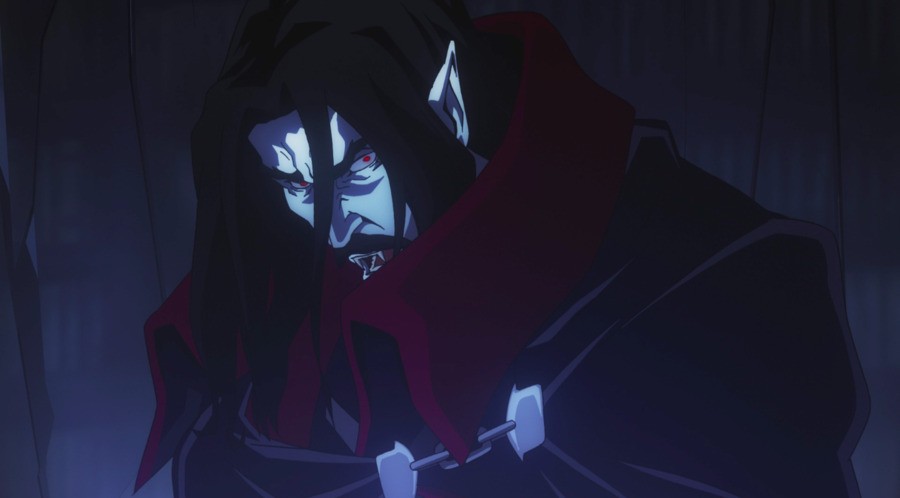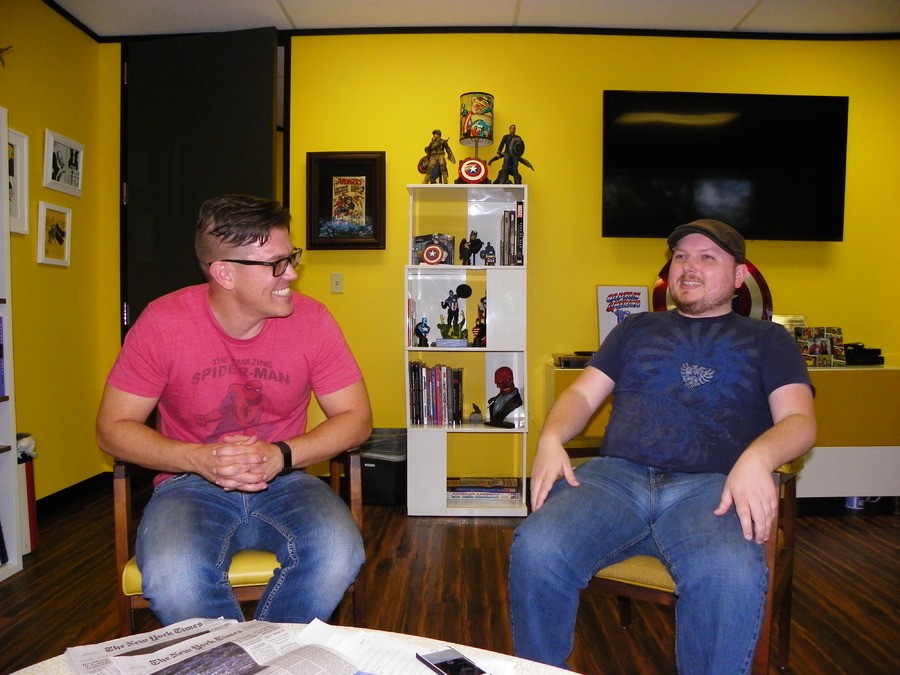
Netflix's Castlevania series may not have pleased absolutely everybody, but we certainly enjoyed it - and it seems have gained favour with plenty of hardcore followers of Konami's vampire-slaying video game franchise.
We've already spoken to producer Adi Shankar about how it all came together, and now it's the turn of Texas-based Powerhouse - the studio behind the design and animation - to give its side of the story. io9 has been speaking to co-founder Brad Graeber and creative director Sam Deats about how they came to work on Castlevania, and their love of the series.
Graeber explains how things got started:
Sam IM’d me one day, saying that he had heard Adi Shankar put something online about the Castlevania project. Frank knew a guy—Tom King—who’s a showrunner over there at Frederator. Frank, Tom, and Kevin started Heart of Texas Productions, which was an animation studio here in Texas for quite some time. And then, we actually got a meeting with Kevin. I’m a big fan of his from way back in the day. He was the producer on all the Ren & Stimpy stuff. Super cool guy. That was nerve-wracking already, but he called me and we got a meeting, and we were like, “What do we do?"
We put together a deck, basically, as if we were an ad agency pitching ourselves. if we were to direct the show. We hadn’t seen a script. We knew nothing about it, but Sam put together all these thoughts of what we’d do, what our influences would be and all that.

This is where Deats' love of Castlevania came in handy; he even mentions following the project since its very early days, when it was supposed to be a direct-to-DVD movie with Warren Ellis involved, and how important it felt it was to reference Ayami Kojima's gorgeous art, which has featured on several entries in the lineage:
I pulled out my “I love the Berserk manga, Blade the Immortal” and all that. That dark fantasy style of storytelling, character design, how gory it gets… I put together a bunch of drawings and sketches, and a few color images that channeled all of that. Most of it barely made it into the final look of the show. But, it at least got some interest out of them. I talked about the directing style and the feel, all the stuff that we think a show like this should be.
I grew up on Castlevania. I continually play Symphony of the Night to this day. I think I had just finished a run-through of that before hearing about [the show being in development], so it was extremely exciting. It’s funny, I had heard about [a Castlevania project] over 10 years ago when they first were talking about the project as a direct-to-DVD series. And I saw the James Jean art that was going around. Every couple of weeks, I’d go to that website they had and hit refresh. Then every couple of months, then years. I gave up eventually.
In the back of everyone’s heads, we knew that we wanted to heavily reference the style Ayami Kojima used the Castlevania games. We wanted to bring the same shade-before-image sort of thing. We tried out a number of things but, for the most part, there was nothing that we wanted to roll with. But those attempts kind of blended into the thought process.
Deats also explained how some of the changes made for the production tidied up the original game's more nonsensical story elements:
If you look back at the original games, Sypha is a part of the church. And when you consider the fact that Trevor Belmont was excommunicated for his dealings with the supernatural, you wonder how a magician would be a part of the church. It doesn’t really jibe well. So, it makes more sense for the entire team to be affected by how the church was at the time. In the same way, Dracula is deeply affected by his wife being killed. Trevor, directly affected by the Church. Sypha, her whole group, the same way. It makes for much better storytelling than this kind of weird ”Sypha is part of the church for some reason” don’t really know why...

The series has been described as anime, even though its a western studio creating it - something which seems to have rubbed some animation aficionados up the wrong way. Deats has a take on that:
There’s always the debate about whether a studio in the US that’s anime-influenced is, in itself, anime. And I’ll let other people decide. But the artists and animators here, obviously being heavily influenced by anime, it was easy for us to inject that look and feel into the show.
The guys over at MOI film [Korea studio which also worked on the series], many of them work on anime. One of the animation directors there worked on the Berserk films and I think he’s worked on tons of anime projects. We got some guys for season two that worked on Death Parade and with Madhouse a lot. So, at the very least, we’re working with artists who directly work on anime.
Graeber adds his thoughts:
It’s tricky because people classify it by geography or style. That’s up to the person. But people need to get used to it. My generation was heavily influenced by Looney Tunes, the Disney films, that kind of thing. The talent that’s coming in now is influenced by anime. And there are amazing American artists—LeSean Thomas, Spencer Wan—all these people whose style would usually be categorized as anime, but they’re brilliant animation directors. And so it feels like you can’t lock it down...
The full interview is well worth a read, and if you're anything like us, you're already looking forward to what happens in season 2.
[source io9.gizmodo.com]




Comments 13
But enough reading! Have at the comments!
Good point about Sypha.
Anime with western influence still gets called anime.
So a cartoon with anime influence should still be called a cartoon.
Not that it matters to me since I like all sorts of styles.
What is an interview? a miserable pile of comments?
Memes aside, brilliant show, great writing; especially considering the writer, Warren Ellis, is the guy who made a good Ultimate Marvel story
Man, the series are so great.. I actually wonder if they can tell a bit of Julius Belmont's story since we might not get a Castlevania game portraying him any time soon...
Webster's definition of anime: "a style of animation originating in Japan that is characterized by stark colorful graphics depicting vibrant characters in action-filled plots often with fantastic or futuristic themes".
The STYLE originated in Japan. That doesn't mean a specific piece of work has to originate in Japan to be anime. Anyone who says this isn't anime because it wasn't made in Japan just sounds like a snob to me.
Still in my queue, as I make my way through Death Note and Fairy Tail.
I loved the first season, and hope they release the second one soon. As for the retcon of Sypha not being in the church, I agree. Weird that a magician from the church would think about keeping company of an excommunicated man.
Western-anime style... that should please everyone
I kid, I kid, just having some fun. I've actually always wanted western talent to inject anime influence into western animation projects. Hopefully it will just grow from here on. We need more mature/gore/etc animation from places not named Japan for once.
Glad he admitted to fundamentally changing main characters' identities to fit his revisionistic narrative.
Also, the canonical Castlevania's Dracula became a vampire after his "first" wife was killed by a vampire. Canonically, his "second" wife used alchemy to create medicine to fight the Plague and was killed by witch trial for doing so. This could have been far more appropriate to demean and critique.
Instead, Netflix Castlevania changes this by clunkily making his wife a scientist intending to propagate "SCIENCE!" to replace "ignorance", tortured by "the fathers of hate and impediment". How original and groundbreaking.
http://castlevania.wikia.com/wiki/Castlevania:_Lament_of_Innocence
Neat but I'm curious as to why Grant was never intended to appear in this adaptation.
Loved the adaptation and can't wait for season 2.
The 3d Remake of Castlevania 2 - Castlevania Horror Quest - https://youtu.be/Q0IzNPwCNCA
Tap here to load 13 comments
Leave A Comment
Hold on there, you need to login to post a comment...